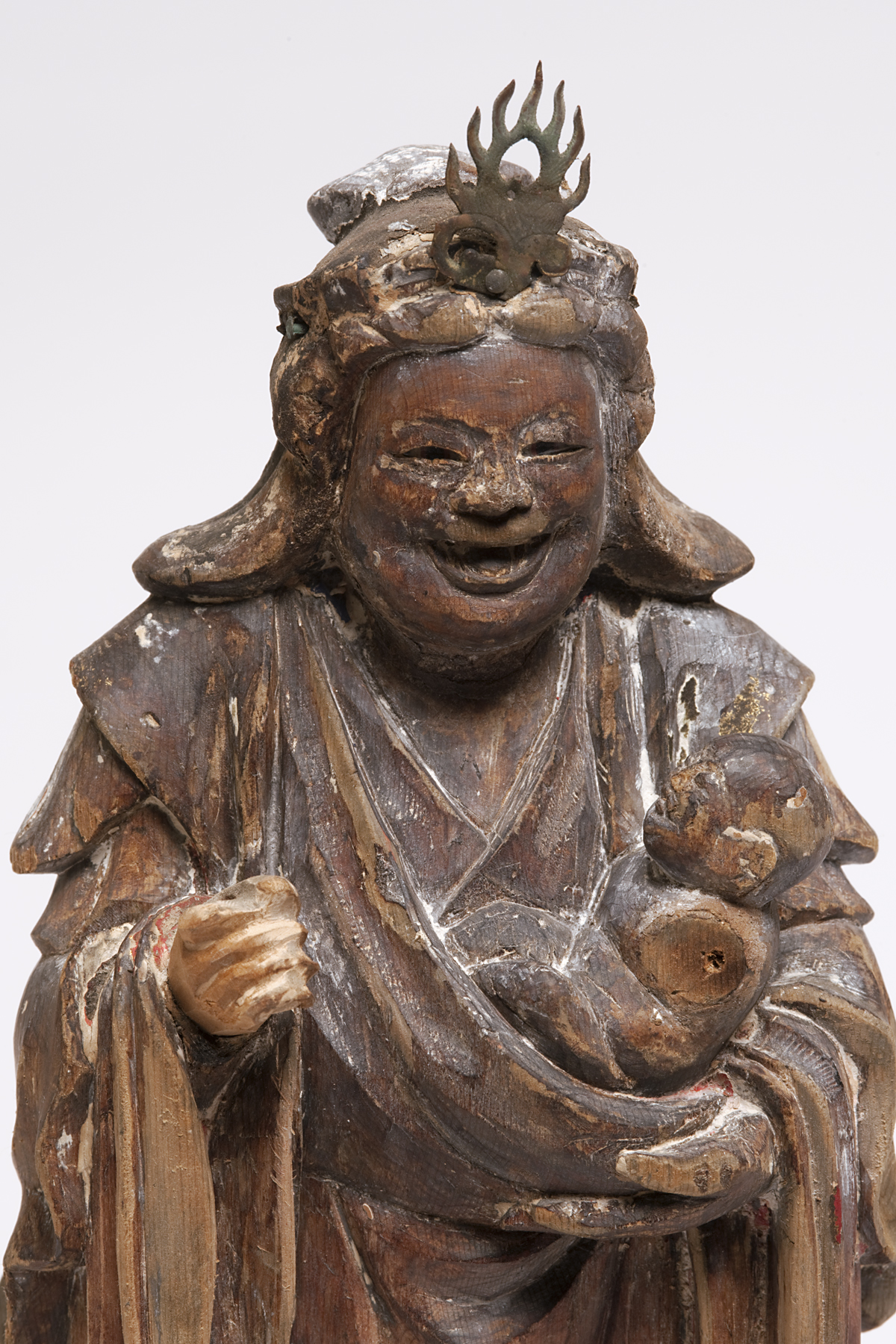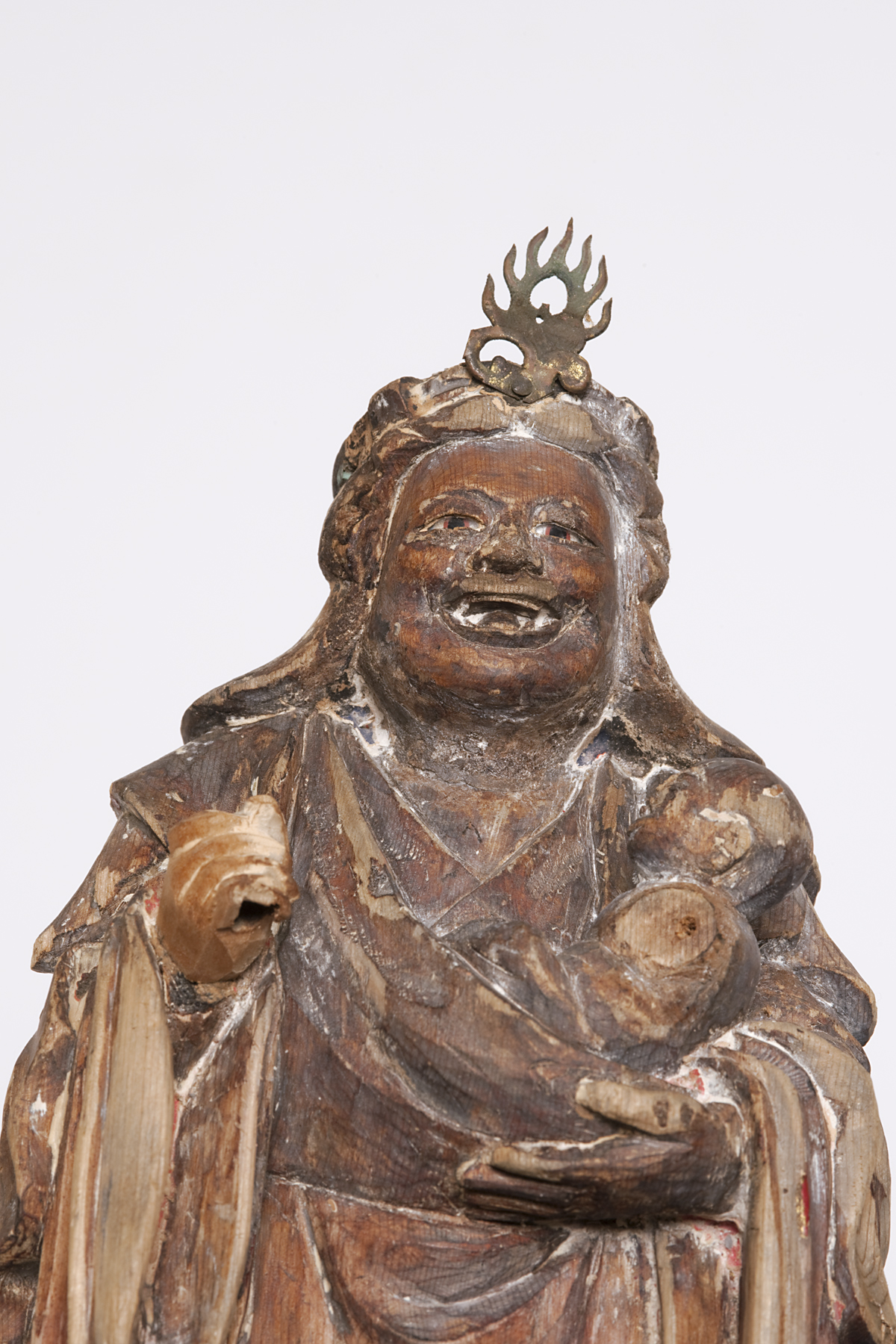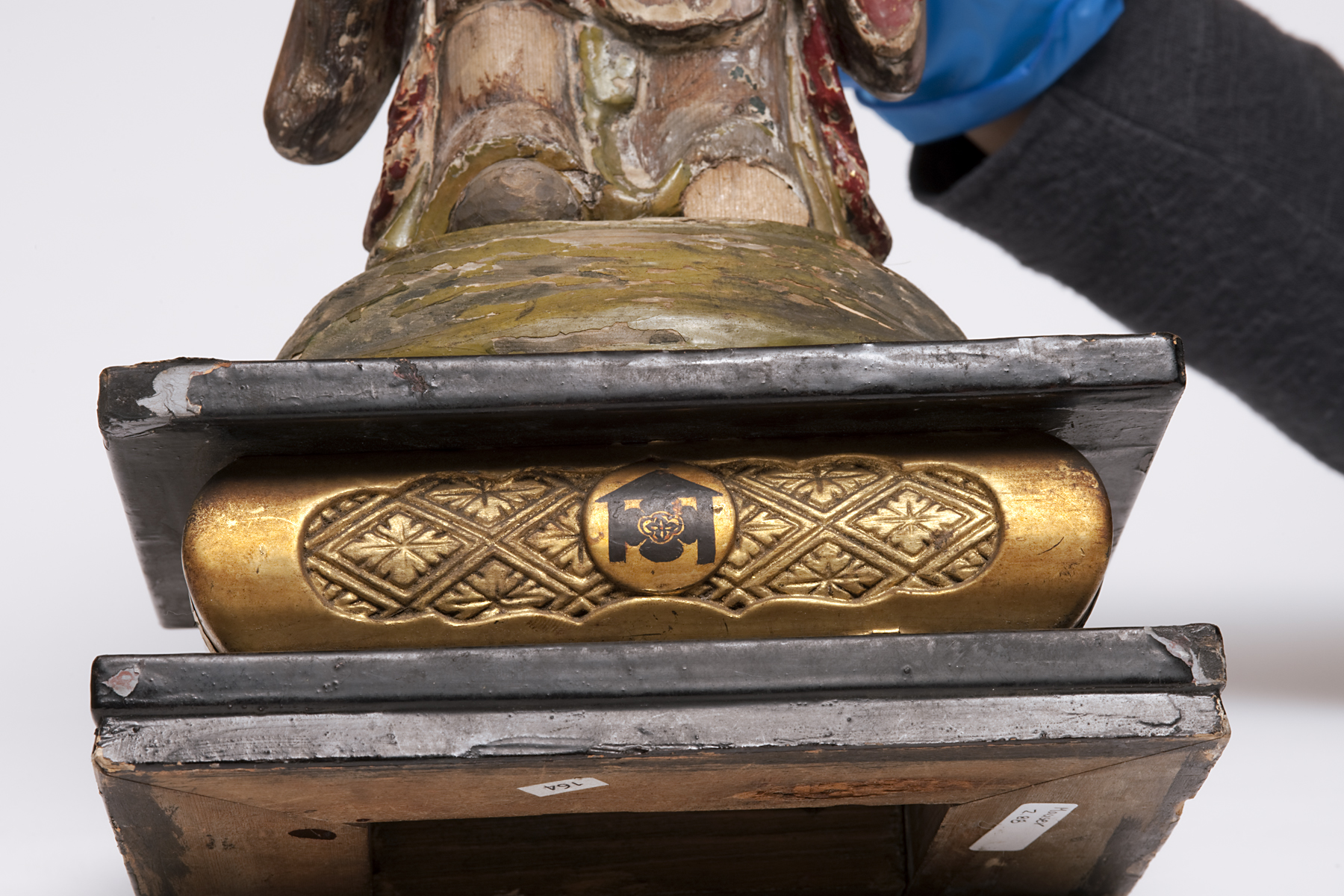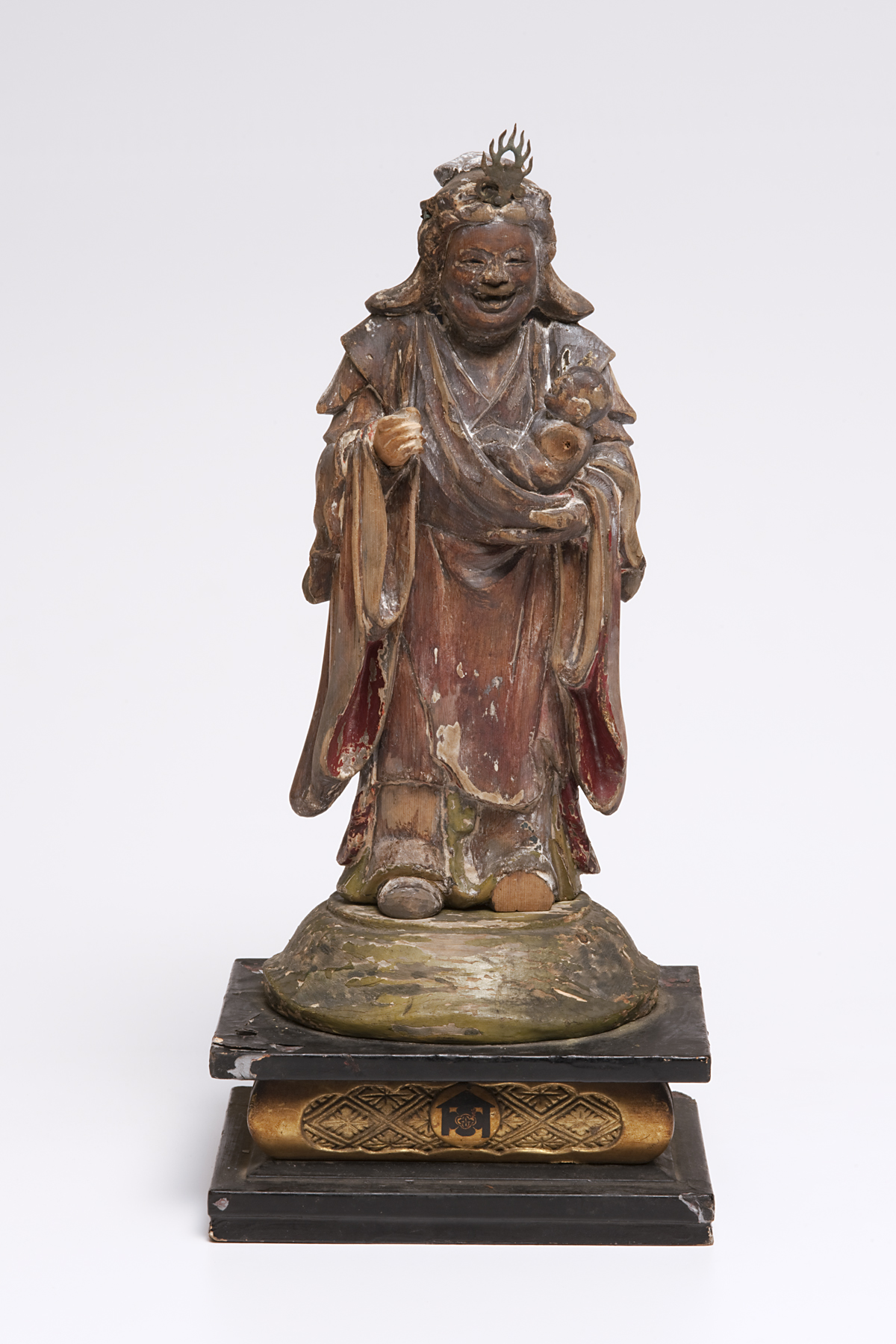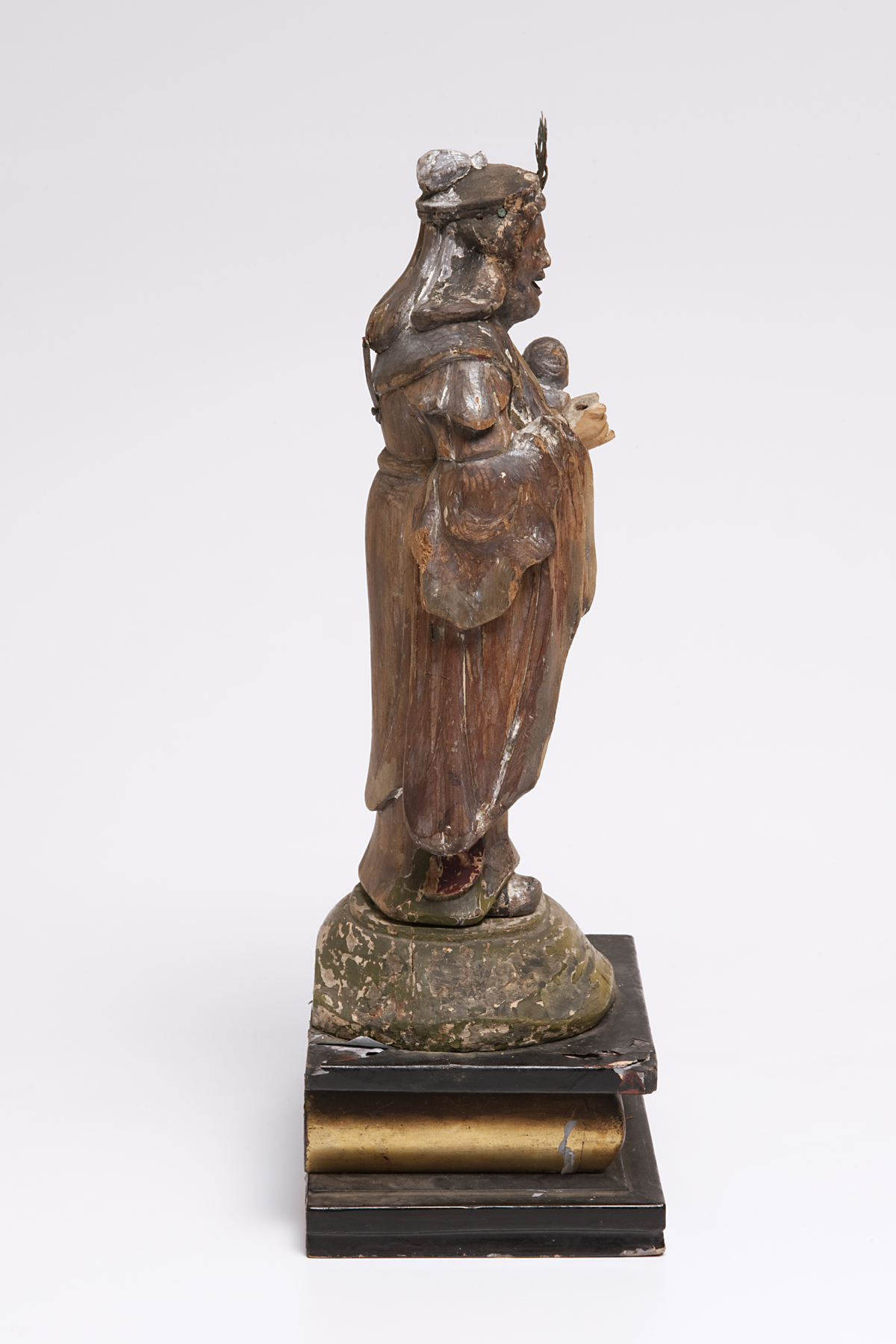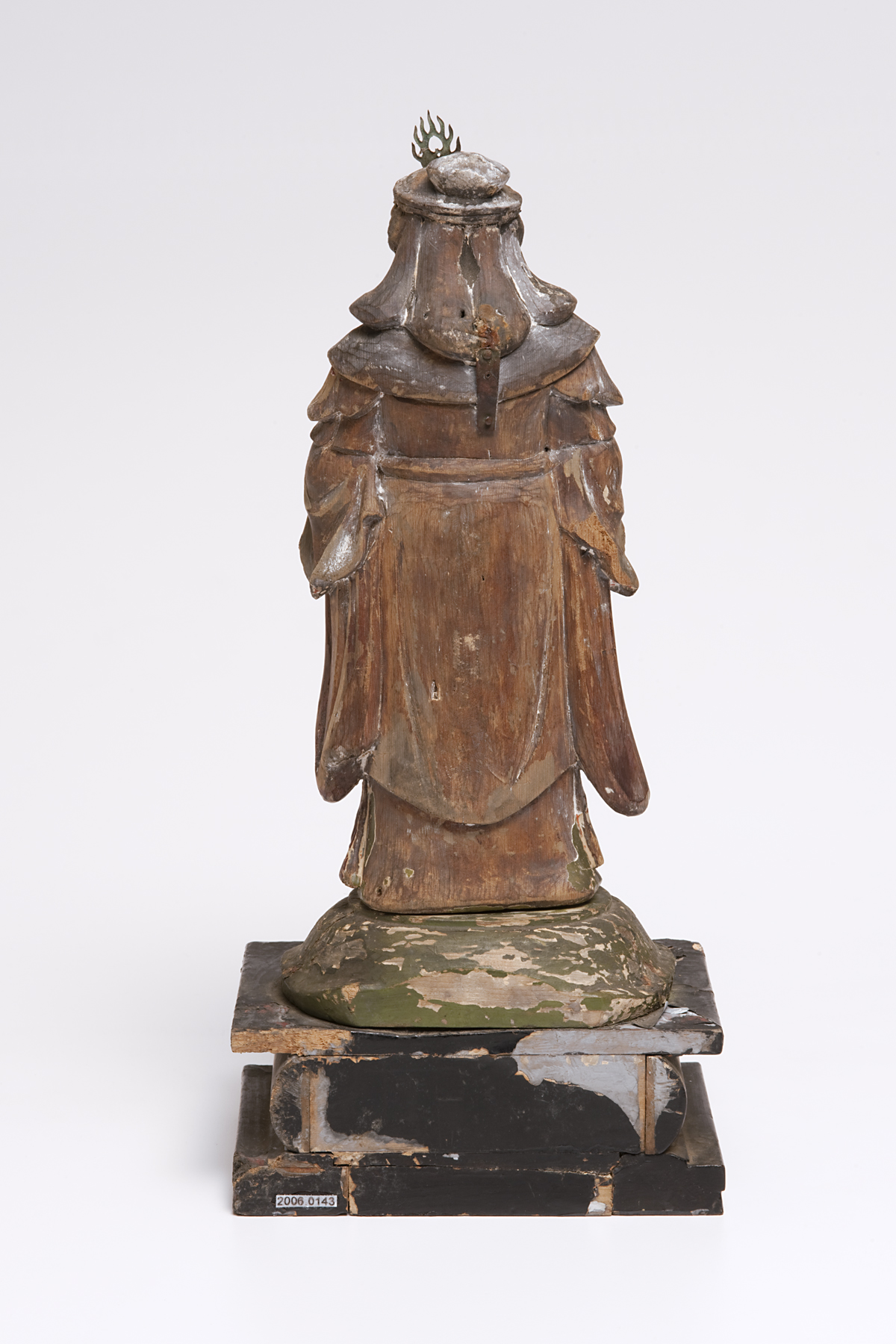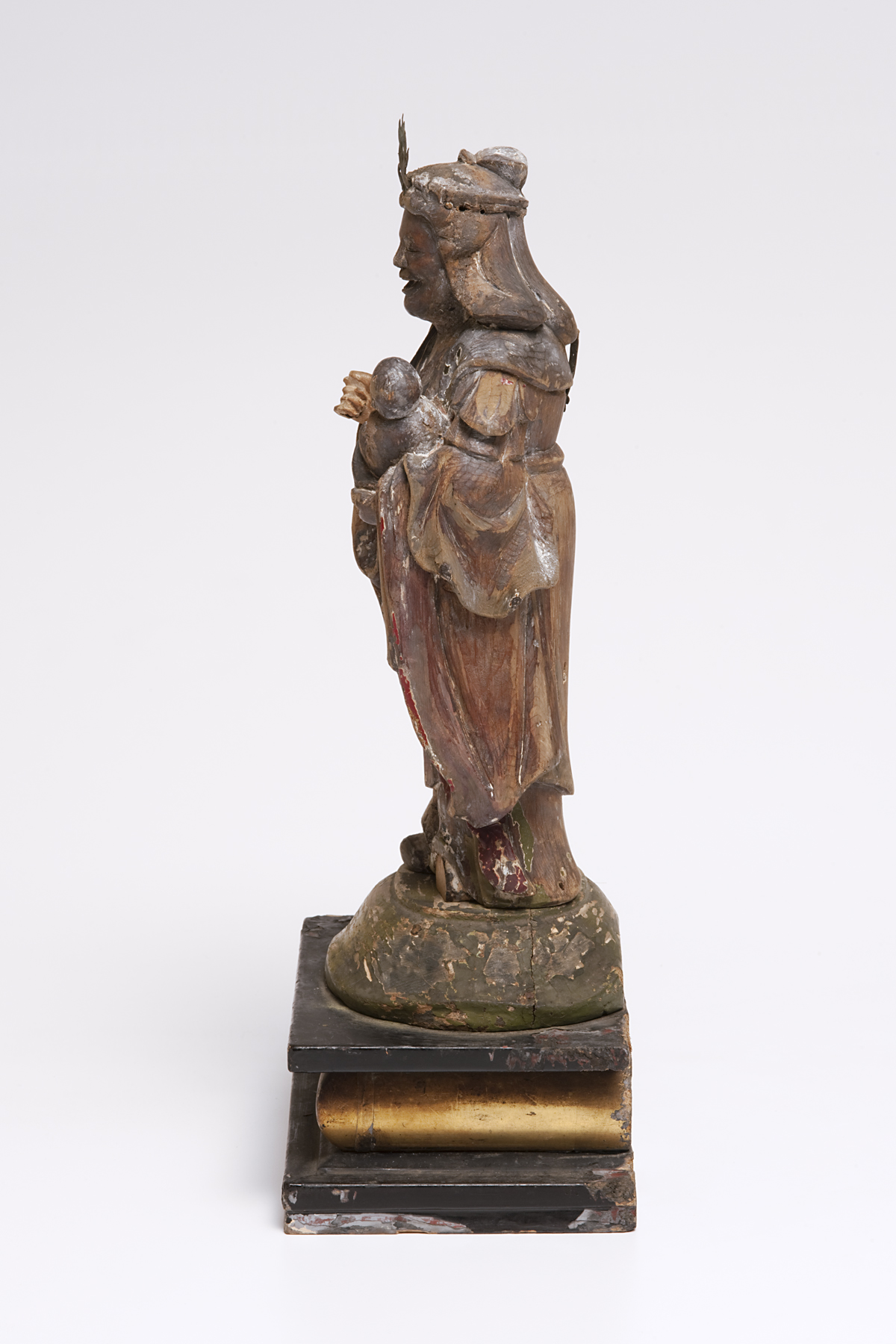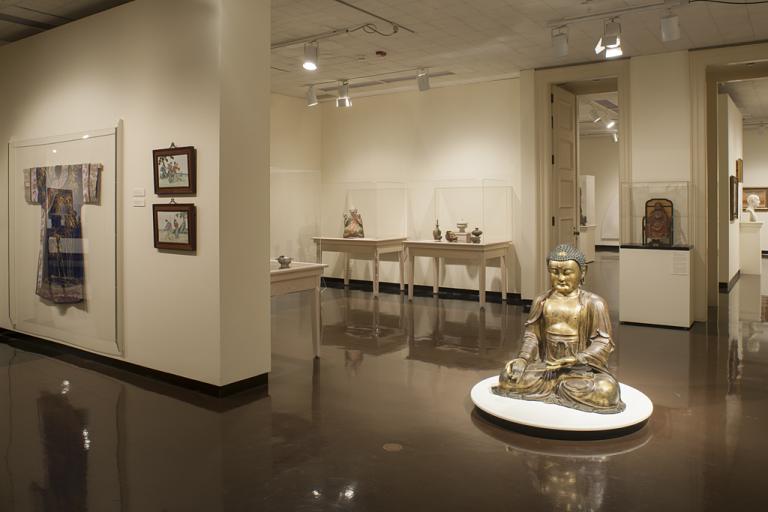鬼子母神 Kishibojin (Hārītī), unknown maker from Japan
Artwork Overview
鬼子母神 Kishibojin (Hārītī)
, 1700s–1800s Edo period (1600–1868)
Where object was made: Japan
Material/technique: wood; lacquer
Dimensions:
Object Height/Width/Depth (Height x Width x Depth): 37.5 x 17.5 x 12 cm
Object Height/Width/Depth (Height x Width x Depth): 14 3/4 x 6 7/8 x 4 3/4 in
Object Height/Width/Depth (Height x Width x Depth): 37.5 x 17.5 x 12 cm
Object Height/Width/Depth (Height x Width x Depth): 14 3/4 x 6 7/8 x 4 3/4 in
Credit line: Gift of the Mauser Harmony with Nature Foundation, Inc., in memory of Dr. Ferdinand F. Mauser 1914–1994
Accession number: 2006.0143
Not on display
If you wish to reproduce this image, please submit an image request

